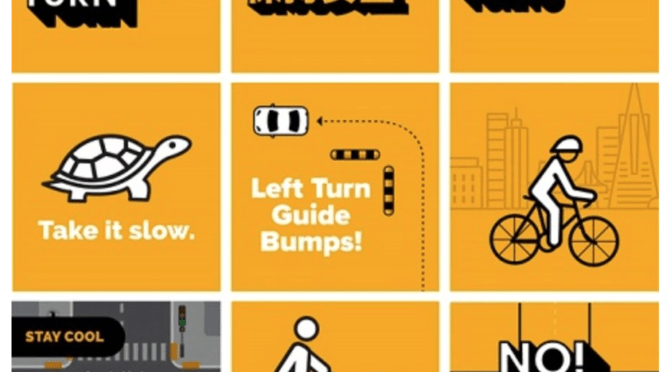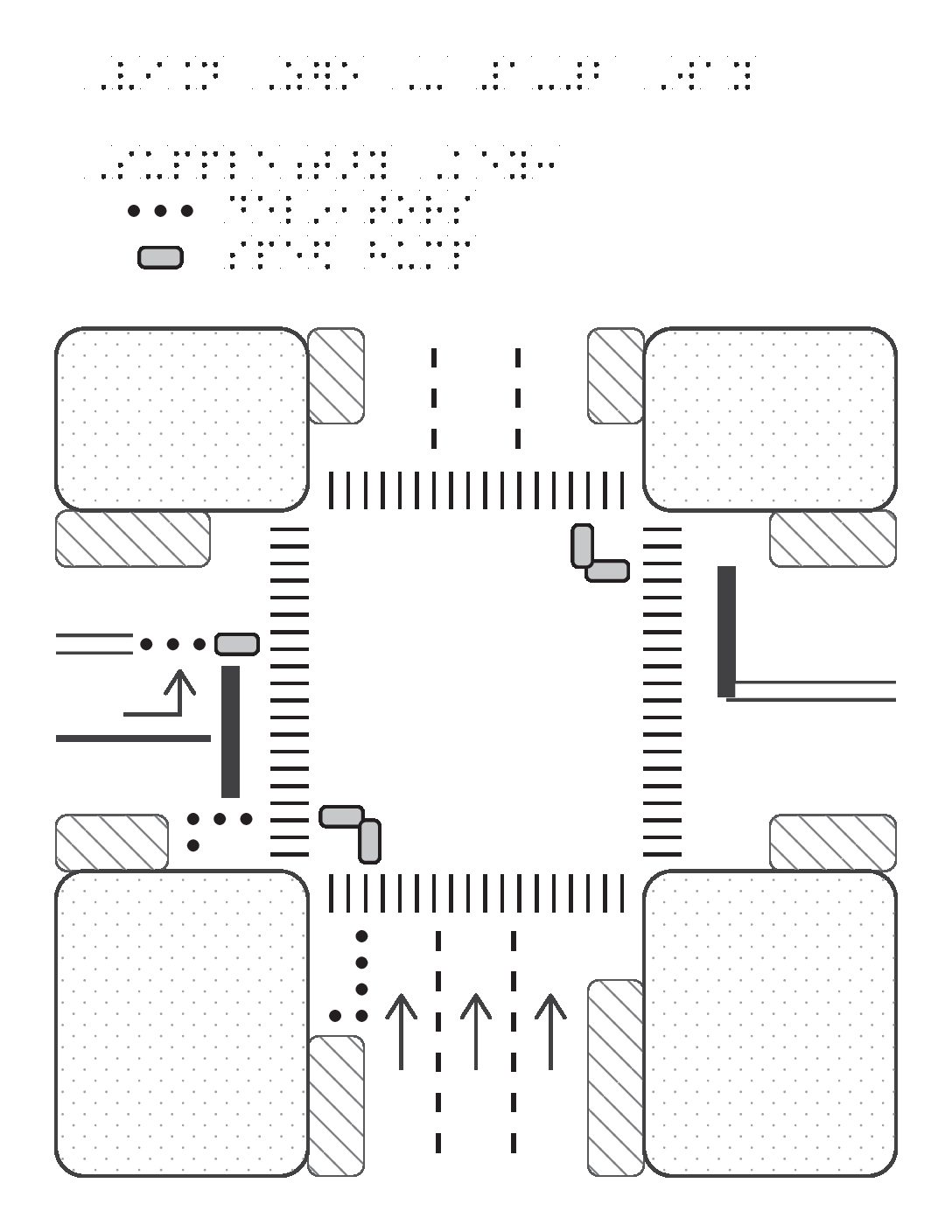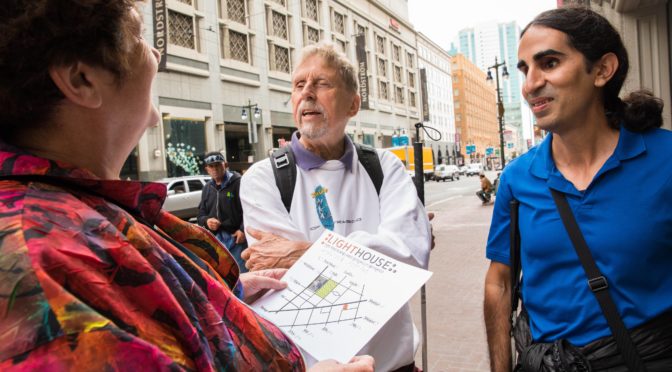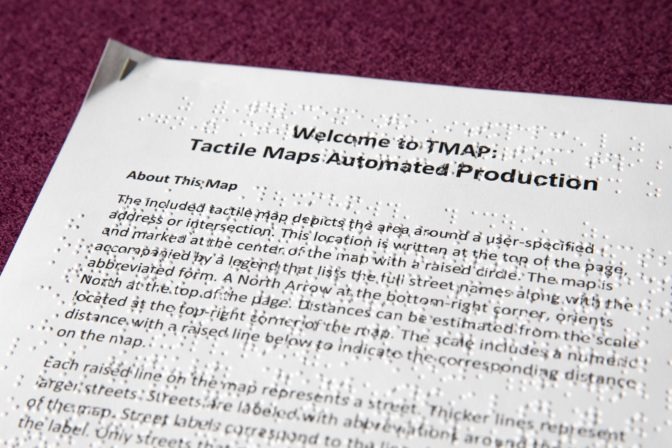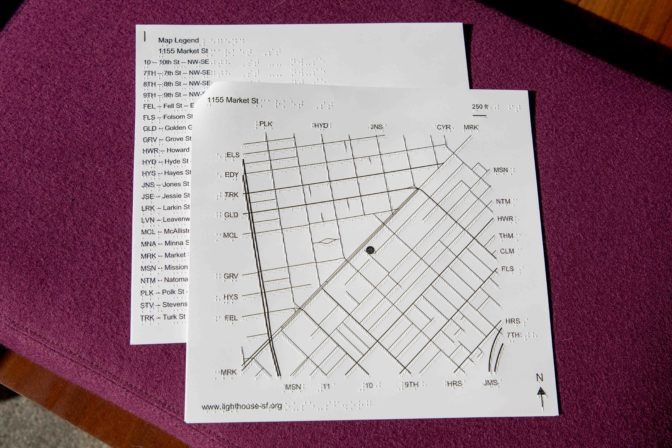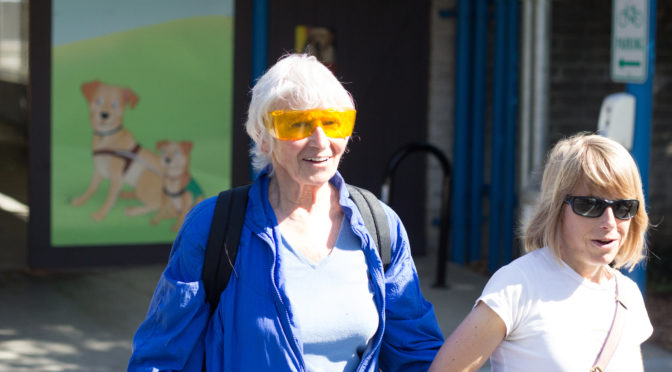POSITION: Orientation and Mobility Specialist (bilingual preferred)
REPORTS TO: Assistant Director Rehabilitation Services
STATUS: Exempt
Role Overview
The Certified Orientation and Mobility Specialist (COMS or NOMC) provides in-person and virtual orientation and mobility to blind, low-vision deaf-blind youth, adults, and seniors from diverse backgrounds. The Orientation and Mobility Specialist will conduct assessments and provide training reflecting recent and progressive travel and orientation techniques and trends, focusing on student’s travel needs in the home, work, academic sites, and community.
The OMS must have the ability to assess and teach to differing skill levels, as well as to train on varied mobility devices and options such as: monocular, tints, GPS Apps, and use (i.e., Blind Square, Google Maps), Audible Pedestrian Signals and tactile maps (public streets, transit hubs, and public spaces and buildings). It is expected that all OMS’s provide instruction that takes into consideration understanding of student’s abilities and potential concomitant health conditions. Knowledge and understanding of primary eye conditions, including Cortical Visual Impairment is imperative. Knowledge of health associated with aging, head injury, diabetes and mental health and developmental disabilities is extremely helpful. Together the OMS and the student develop and revise goals to achieve the student’s intended mobility outcomes.
Flexibility and ‘thinking outside of the box’ are essential to this position. The philosophy of our trainers is that of facilitation of skills for independent (as defined with each student) travel. Our team also provides training with the student using a training shade where best applied for learning and instruction. The OMS must be able to work with and provide information and training to family and friends, community members, volunteers and service providers and effectively communicate and collaborate with referral agencies in providing services to shared students. The cross-cultural community of the LightHouse is increasing, and second language ability is preferred and cultural sensitivity to disability is integral to this position. The duties of the OMS may include (but are not limited to): conducting of assessments, writing individual training plans with the student, and facilitating individual and group instruction as needed. Additionally, the OMS may be requested to coordinate specific training projects with colleagues or represent the LightHouse in the community, this may be ongoing or short term. Orientation and mobility instruction may occur virtually (Zoom), on-site of LightHouse facilities, in the home, workplace, academic sites or the student’s community, including travel on all forms of San Francisco Bay Area-wide public transportation and Paratransit.
While most of the training occurs throughout the greater San Francisco Bay Area, the OMS must be open and flexible to working from all LightHouse locations and sometimes beyond, as needed for special projects. Additionally, the OMS must be able to balance their training schedule to accommodate week-long seminar training Enchanted Hills Camp and Retreat; immersive training in San Francisco with our Guide Dogs for the Blind collaboration (orientation skill development) or travel to locations outside the greater bay area overnight to accommodate training for students who live outside the area. Training may occur in either urban (all areas of a city) or rural settings. The OMS may also be asked to teach and assess for urgent and basic daily living skills. The OMS is a professional within the Lighthouse Training Team, sharing resources, recommendations, referrals, and skills with each other. All our training team practice hone their teaching skills under occlusion as needed, providing feedback, and discussing strategies for training.
Diversity and Inclusion: LightHouse intentionally and actively works to minimize barriers to employment faced by many marginalized groups. As a result, we welcome applicants from diverse backgrounds and abilities, including but not limited to applicants who possess various disabilities, racial and ethnic backgrounds, sexual orientation, gender identities, and ages.
Minimum Qualifications:
Education or equivalent: University Master’s Degree or BA in Orientation and Mobility or MA/BA with National Orientation and Mobility Certification (NOMC) from the National Blindness Professional Certification Board (NBPCB). If, COMS, then Certification of Vision Rehabilitation and Education Professionals (ACVREP) preferred (needed to work with VA).
Experience: A minimum of two years teaching Orientation and Mobility preferred. A history of teaching basic independent living skills (home-to-work skills) with adults and/ or seniors necessary.
Other: Fluency (speaking, reading, and writing) in Spanish, Cantonese, ASL or Russian preferred. Multicultural teaching experience preferred; excellent verbal and written communication skills; strong interpersonal skills to relate to staff, blind and visually impaired students, and persons in the community with varied backgrounds and viewpoints. Strong user of Smart Phone/Tablets, Microsoft Office Programs and databases and virtual platform(s) (Zoom), essential. Ability to travel throughout the LightHouse service area (private vehicle or public transit). Current CPR and First Aid certification required.
An ability to formulate individual, sequential training plans. Knowledge of Smart Phone accessibility related to O&M and Braille/tactile mapping experience desired.
Job Responsibilities and Qualifications:
- Assess individual needs of students and set goals for instruction.
- Provide professionally written student assessments, goal development, and training summaries / recommendations, monthly to all third-party contracting sources (such as the Department of Rehabilitation, Veterans Administration, Regional Center, and other third-party vendors).
- Maintain weekly and monthly database entries regarding units of service provided to students, along with notes, goal-planning and reports for all direct services provided.
- Function as Agency liaison in traffic, community transportation services and auditory signal issues or projects as requested.
- Provide cane travel, route travel with dog guide users & teams and human guide instruction.
- Maintain updated information regarding Paratransit programs, providing registration assistance and training in the programs, as necessary.
- Provide orientation and route training in all environments and on various forms of public transit.
- Assess for and teach basic and essential independent living skills to blind and low-vision students such as labeling, money organization, use of an ATM, and home safety practices (5-minute lessons).
- Provide training in a range of all indoor and out-of-door environments: all urban city environments, rural environments, professional and academic campuses and buildings, homes, skilled nursing facilities etc.
- Facilitate or co-facilitate classes, including our Changing Visions, Changing Lives immersion and community workshops.
- Conduct outreach, training and collaboration with local universities and school’s disabled student programs, in providing campus orientation.
- Conduct student home safety assessments and community agency environmental evaluations.
- Provide consultation and/or training to staff in community agencies regarding environmental modifications and strategies in collaborating with persons who are blind or low vision.
- Attend and participate in All-Staff meetings, monthly Consumer Review, and departmental meetings (Training Services).
- Timely completion of requisite documentation, billing, reports etc. in a timely manner (monthly). All completed in Salesforce Database.
- Participate in Agency public outreach and education as requested.
- Maintain timely communication and responses to students (within 48 hours of referral).
- Maintain professional communication via e-mail and voice mail on a timely and ongoing basis.
- Other Duties: Please note this job description is not designed to cover or contain a comprehensive listing of activities, duties or responsibilities that are required of the employee for this job. Duties, responsibilities, and activities may change at any time with or without notice.
Supervisory Responsibility
Supervise and provide instruction to Orientation and Mobility Interns as requested. (Must have MA/ACVREP Certification plus three years’ experience for Intern supervision.)
Physical Requirements
Physical stamina and the ability to work indoors and outdoors and walk up to 7 hours at a time (all terrains including stairs). Ability to work during inclement weather. Requires the ability to lift 25 pounds on a frequent basis and up to 50 pounds on an occasional basis with the assistance of another person as needed.
Working Conditions
The Orientation and Mobility Specialist is expected to follow directions from state, local government, and public health officials regarding the wearing of Personal Protection Equipment (PPE). As a result, this job may be required to be performed using a mask and gloves for the protection of this employee, all Lighthouse employees, and students. The OMS will follow all COVID-19 Guidelines in working with students, including ensuring all students (and family members of students) wear PPE during their training with the student (at the LightHouse and/or the home of the student).
- LightHouse for the Blind and Visually Impaired is an equal opportunity employer to all. Qualified applicants are considered regardless of age, race, color, creed, national origin, ancestry, marital status, pregnancy, disability, medical condition, genetic information, gender identity, sex, sexual orientation, religion, military veteran status, political affiliation, height, weight, or any other factor unrelated to the job.
- We strive to maintain a scent-free environment and a drug-free workplace free of harassment, in accordance with California law. Employees are expected to behave in accordance with these objectives.
- All LightHouse employees are hired for an indefinite and unspecified duration and consequently, no employee is guaranteed employment for a specified length of time. Employment is at the mutual consent of the employee and LightHouse. Accordingly, either the employee or LightHouse can terminate the employment relationship at any time, with or without cause (“employment at will”).
TO APPLY:
Please send a cover letter and résumé as Word attachments (no PDFs please), to hr@lighthouse-sf.org, including the job title in the subject line. We will not consider videos or hyperlinks to online profiles. Due to time constraints, we will only respond to complete submissions in which there is serious interest. Thank you for your understanding.



